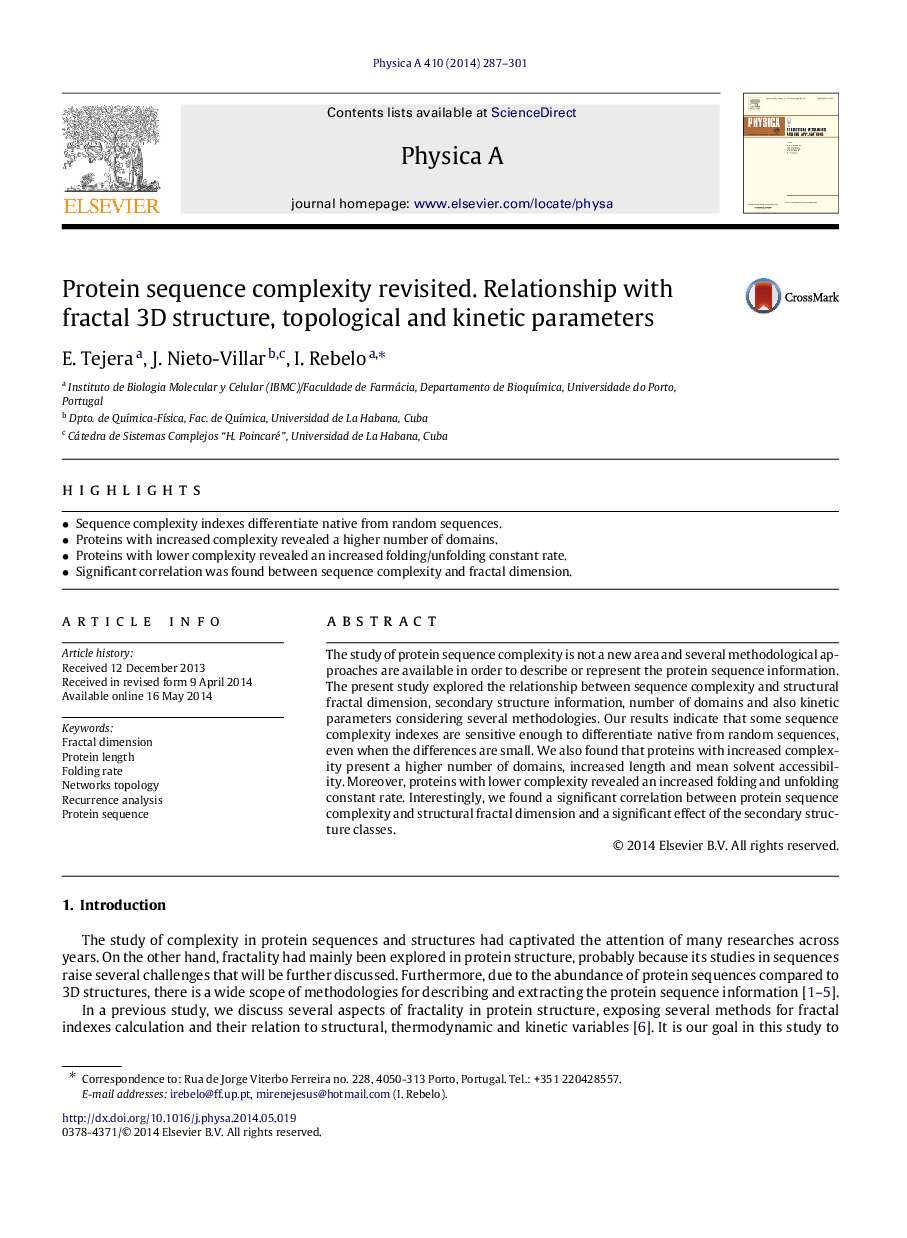| Article ID | Journal | Published Year | Pages | File Type |
|---|---|---|---|---|
| 7380818 | Physica A: Statistical Mechanics and its Applications | 2014 | 15 Pages |
Abstract
The study of protein sequence complexity is not a new area and several methodological approaches are available in order to describe or represent the protein sequence information. The present study explored the relationship between sequence complexity and structural fractal dimension, secondary structure information, number of domains and also kinetic parameters considering several methodologies. Our results indicate that some sequence complexity indexes are sensitive enough to differentiate native from random sequences, even when the differences are small. We also found that proteins with increased complexity present a higher number of domains, increased length and mean solvent accessibility. Moreover, proteins with lower complexity revealed an increased folding and unfolding constant rate. Interestingly, we found a significant correlation between protein sequence complexity and structural fractal dimension and a significant effect of the secondary structure classes.
Related Topics
Physical Sciences and Engineering
Mathematics
Mathematical Physics
Authors
E. Tejera, J. Nieto-Villar, I. Rebelo,
